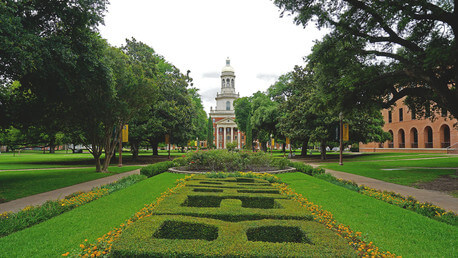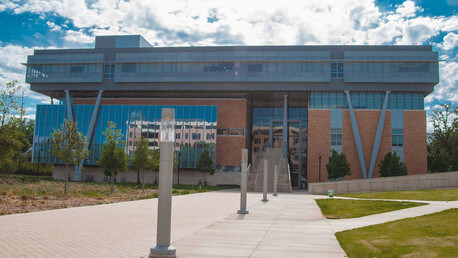Tuition, Cost & Aid
Affordability and Cost
Average Net Price Average net price for full-time, first-time degree/certificate-seeking undergraduates paying the in-state or in-district tuition rate who were awarded grant or scholarship aid from federal, state or local governments, or the institution. Other sources of grant aid are excluded. Aid awarded anytime during the full aid year is included.
Average net price is generated by subtracting the average amount of federal, state or local government, or institutional grant and scholarship aid from the total cost of attendance. Total cost of attendance is the sum of published tuition and required fees (lower of in-district or in-state), books and supplies and the weighted average room and board and other expenses.
Average net price is generated by subtracting the average amount of federal, state or local government, or institutional grant and scholarship aid from the total cost of attendance. Total cost of attendance is the sum of published tuition and required fees (lower of in-district or in-state), books and supplies and the weighted average room and board and other expenses.
$9,277
Average Net Price By Family Income
Tuition
| In-State Tuition In-state tuition is the tuition charged by institutions to those students who meet the state's or institution's residency requirements. In-district tuition is the tuition charged by the institution to those students residing in the locality in which they attend school and may be a lower rate than in-state tuition if offered by the institution. | $4,056 |
| Out-of-State Tuition Out-of-state tuition is the tuition charged by institutions to those students who do not meet the state's or institution's residency requirements. Out-of-district tuition is the tuition charged by the institution to those students not residing in the locality in which they attend school. | $4,656 |
Additional Costs
Room and Board The weighted average for room and board and other expenses is generated as follows:
| $9,458 |
| Books and Supplies | $1,000 |
| Tuition Payment Plan | Yes |
Financial Aid: visit page
Financial Aid Email: faid@tjc.edu
Aid & Grants
0
100
57%
Need Met
Students Receiving Gift Aid Percent of undergraduate students awarded federal gift aid. Federal gift aid includes any grant or scholarship aid awarded, from the federal government, a state or local government, the institution, and other sources known by the institution. Students Receiving Grants Percent of undergraduate students awarded grant aid. Grant aid includes any grant or scholarship aid awarded, from the federal government, a state or local government, the institution, and other sources known by the institution. Students receiving state aid Students receiving federal aid
36%
Average Aid Per Year
$6,047
36%
Average Federal Grant Aid Per Year
$5,909
Average Institution Grant Aid Per Year
$4,192
5%
Average State Grant Aid Per Year
$3,377
53%
Average Federal Grant Aid Per Year
$5,909
Total Needs Based Scholarships/Grants Total amount of grant or scholarship aid awarded to all undergraduates from the federal government, state/local government, the institution, and other sources known to the institution.
$19,602,794
Total Non-Need-Based Scholarships/Grants
$1,514,086
Student Loans
Students Borrowing Loans Loans to students - Any monies that must be repaid to the lending institution for which the student is the designated borrower. Includes all Title IV subsidized and unsubsidized loans and all institutionally- and privately-sponsored loans. Does not include PLUS and other loans made directly to parents.
27%
Average Loan Amount Per Year
$5,011
Students receiving federal loans
27%
Average Federal Loans Per Year
$5,011
Average Debt at Graduation The median federal debt of undergraduate borrowers who graduated. This figure includes only federal loans; it excludes private student loans and Parent PLUS loans.
$6,416
Loan Default Rate
14%
US National: 7%
Median Monthly Loan Payment The median monthly loan payment for student borrowers who completed, if it were repaid over 10 years at a 5.05% interest rate.
$112
What Students Are Saying
Compared to the local 4 year university, TJC offers the core curriculum for almost 1/3 of the cost. My parents are paying for my education, along with minimal scholarship money, and their advice to take advantage of a top rated Jr. College like TJC was sound. Why end up with thousands in student loans to pay back? TJC will get you started without the debt.
determined to finish
Tuition here is ridiculously affordable, the old saying of college is too expensive is proven false in this school. A full year of tuition is well below 1,500 if you live in within the city, and if you live in the dorms it's roughly 10,000 a year.
Aziel from Tyler, TX
Like I said, TJC has some great teachers. They can be fun and enlightening and can help you on the road to your future. This is true for most of the campuses professors but there are a slight few with whom it is up to you to decide what you take from their courses.
Rachel from Whitehouse, TX
Being a junior college this school is a great way to get ones core classes out of the way for less money than it would cost at a university. The credits at this school also easily transfer to four year universities.
Melody from Sunnyvale, TX
TJC also gives you a lot of Bang For your buck in every aspect like affordable books and supplies. Installment plans were they let you pay for your course a moth at a time and half the cost of tuition compare to University and other colleges.
Josue from New Summerfield, TX
If you are looking for an University, this isn't the place for you. TJC is a good stepping block for you to understand college life; gain new knowledge; create a network of good friends and it will give you the chance to transfer all of that to an actual University where you can expand even further.
Ray from Tyler, TX












